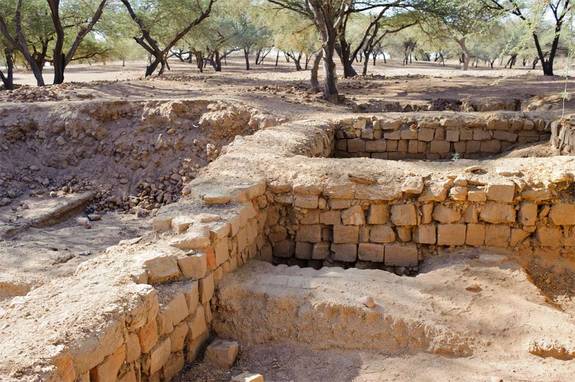
© Royal Ontario MuseumOnly a small portion of the structure, possibly an ancient palace, has been excavated so far (part of it can be seen in the photo's bottom foreground) in central Sudan beneath another ancient palace. The structure may be the oldest building ever found in the ancient city of Meroë.
Hidden beneath an ancient palace in what is now central Sudan, archaeologists have discovered the oldest building in the city of Meroë, a structure that also may have housed royalty.
The capital of a vast empire that flourished around 2,000 years ago, Meroë was centered on the Nile River. At its height, the city was controlled by a dynasty of kings who ruled about 900 miles (1,500 kilometers) of territory that stretched from southern Egypt to areas south of modern-day Khartoum.
People of Meroë built palaces and small pyramids, and developed a writing system that
scholars still can't fully translate today. Although Meroë has been excavated off and on for more than 150 years, archaeologists are not yet clear on how it came to be. The city seems to have emerged out of nowhere.
"In the region of central Sudan, we have an interesting research problem," said team leader Krzysztof Grzymski, a curator at the Royal Ontario Museum in Toronto, Canada.
"We are acquainted with the prehistory cultures, from Stone Age all the way through Neolithic, let's say until about 3000 (or) 2500 B.C." But after that "we have nothing, then out of the blue in 800 B.C., we have Meroë culture," Grzymski told LiveScience.
In addition to filling this gap, the presence of such an ancient building at Meroë suggests that an early temple dedicated to Amun, a
highly regarded Egyptian god, may have existed as well. Archaeologists have speculated on its existence but have never actually found it.
